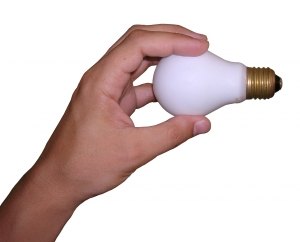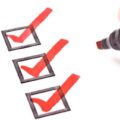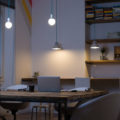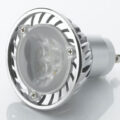Here are a few points to bear in mind to help ensure your safety when handling, installing, using and disposing of lamps:
- Always handle lamps with care and store them appropriately to minimise the likelihood of glass breakage. If you do break a lamp, please remember that some lamps contain harmful substances and should be handled accordingly. LED light bulbs do not contain mercury but do contain substances that could be harmful in large quantities. Therefore they should be handled with care and disposed of in accordance with your local waste authority rules and health and safety policies.
- Lamps should be easy to install and remove from their fittings and should never be forced as this can often result in breakage of the glass. If you keep a record of all of the lamps that you use by either checking your previous orders on your account or noting them down can help you remember whether they are push fit, twist lock or screw-in fittings. This should help prevent twisting a push-fit lamp or vice-versa!
- Please remember that lamps are often hot in operation and should always be installed in such a way as to minimise the possibility of personal injury and the risk of fire. Many lamps actually emit more energy as heat than they do light and should never be placed close to combustible materials or furnishings. Please check the packaging of the lamp before you install it and make sure you adhere to any manufacturer’s guidelines on safety distances etc.
- Look out for the pictograms found on the packaging of many lamps. Some require a little interpretation but they should always be observed.
- Always install the correct lamp for your fitting. Some lamps may look very similar but may have quite different heat characteristics that could cause damage or fire risk.
- LED light bulbs should be disposed of carefully as although the gases they contain are not deadly, a large amount of them could be extremely dangerous. If a bulb is broken, sweep it up carefully and wear gloves and a mask if you own them.
- Always observe the maximum wattage and bulb shape specified for a light fitting or lampshade. Failure to do so may lead to damage to the fitting or even a fire risk. Lampshades are generally rated both for the maximum wattage and recommended shape of bulb. For example a large shade may be rated for use with a 100W GLS bulb whereas a smaller one, or one with more delicate fabric, may specify a 40W golf ball. Never use a physically larger bulb than that specified (eg a GLS bulb instead of a golf ball) since this will bring the hot surface of the bulb closer to the fabric and risk burning.
- Most lamps are designed for use indoors or in closed luminaires (ie protected from the elements). Please ensure that you use an appropriate lamp for outdoor applications, particularly in open fittings or luminaires. GLS or golf ball style lamps can only be used in uncovered outdoor applications if the fitting includes appropriate watertight features and the bulb wattage is no more than 25W. Larger wattage bulbs are prone to cracking if splashed with rain while hot.
WEEE Directive
The Waste Electrical and Electronic Equipment (WEEE) Directive encourages the recycling of WEEE in order to reduce landfill and to reduce the potential effects on human health and the environment caused by the presence of hazardous substances which are contained in many types of electrical equipment.
The WEEE directive does not apply to LED light bulbs in small amounts which can be treated as normal waste but it does cover all types of discharge lamps such as fluorescent tubes, compact fluorescents, compact fluorescent energy savers, SONs, Mercury, Metal Halide and other types of discharge lamps. All of these contain various substances such as mercury, lead, cadmium or sodium which are potentially hazardous and/or damaging to the environment.
From 13th August 2005 all such items are marked with a crossed-out wheeled-bin symbol to show that these items should not be disposed of as general waste. SimplyLED are obliged under these regulations to offer our domestic customers free take-back of their WEEE on a like-for-like basis when you buy new discharge lamps from us. Please note however that ‘free take back’ means that we will not charge you for recycling costs however it is under the obligation of the customer to return the goods to SimplyLED. Please contact us for details of your nearest recycling location if you are purchasing new discharge lamps and wish to send back the old ones for recycling. Businesses wishing to find out more about recycling can find further details on the Waste Recycling website.
RoHS
The Restriction of use of certain Hazardous Substances (RoHS) Directive came in to force on 1st July 2006. This aims to restrict the use of a number of hazardous substances including mercury, cadmium, hexavalent chromium and lead. All lamps that we supply are manufactured to meet the requirements of the RoHS directive.





[…] more information on handling light bulbs visit: Bulb Safety and DisposalIf you need more information contact: 0845 459 […]